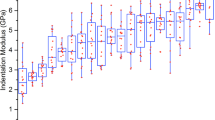Abstract:
Quantitative Ultrasound (QUS) methods have been shown to be useful in the assessment of bone status. Nevertheless, ultrasound transmission depends on a variety of skeletal parameters, and a detailed understanding of ultrasound propagation through bone is important for the accurate interpretation of QUS results. In this study we wanted to elucidate the pathways of an ultrasound wave through finger phalanges and determine correlations between geometric and QUS parameters. Phalanges of a subject group were measured using QUS and magnetic resonance imaging (MRI). MRI was used for the derivation of the geometric parameters. Similar assessments were performed on cylindrical tubes and with a simulation program. New parameters related to speed of sound (SOS) and amplitude of the wave (A2P) were calculated. Strong correlations between QUS parameters and morphologic cross-sectional areas were observed in vivo and in phantoms. Similar correlations could be found in the calculations using the simulation software. Cross-sectional cortical area, medullary canal area and relative cortical area could be calculated from the QUS parameters (subjects: R 2= 0.71 for cortical area, R 2 = 0.45 for medullary canal area and R 2= 0.61 for relative cortical area; phantoms: R 2= 0.98 for cortical area, R 2= 0.78 for medullary canal area and R 2= 0.77 for relative cortical area). In vivo, phantom and simulation results consistently showed that SOS was correlated with cortical area but not with medullary canal area while the opposite was found for A2P. Pathways of the ultrasound wave through solid cortical bone and the medullary canal could be identified and the propagation of the wave could be depicted. These results help to interpret QUS findings and provide information that may be helpful in improving the performance of QUS.
Similar content being viewed by others
Author information
Authors and Affiliations
Additional information
Received: 12 August 1999 / Accepted: 3 March 2000
Rights and permissions
About this article
Cite this article
Barkmann, R., Lüsse, S., Stampa, B. et al. Assessment of the Geometry of Human Finger Phalanges Using Quantitative Ultrasound In Vivo. Osteoporos Int 11, 745–755 (2000). https://doi.org/10.1007/s001980070053
Issue Date:
DOI: https://doi.org/10.1007/s001980070053




